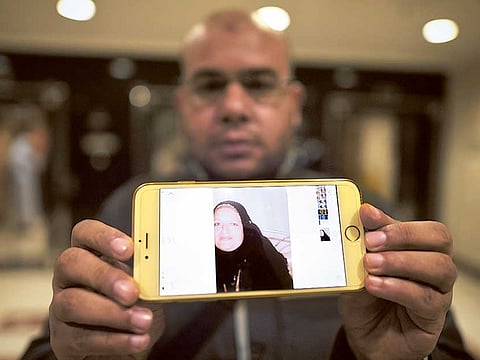Relatives struggle to find missing pilgrims after Haj tragedy
Dead are yet to be identified and relatives scramble from hospital to morgue

Dubai: “We can’t find him” was the lament of anxious relatives and friends on Saturday as they scoured hospital wards and the morgue, two days after the disaster at the Haj.
Those killed have yet to be identified after Thursday’s crush in Mina, near the Saudi city of Makkah, during the “stoning of the devil” ritual at the annual pilgrimage to Islam’s holiest sites.
The death toll rose to 769 on Saturday, a Saudi minister said. More than 800 people were also injured in the Mina incident.
On Friday, Pakistan’s foreign ministry said that 236 of its citizens were missing, but later reported that 86 of them had been located.
Frustrated families have been left with the painful task of trying to find out for themselves whether loved ones are dead or alive.
“They say they don’t have his name registered,” an agitated Egyptian pilgrim said after arguing with reception staff at Mina Emergency Hospital.
The pilgrim, who gave his name only as Abdullah, said he was searching for his 36-year-old neighbour.
“I’ve been going around hospitals but couldn’t find him. They told me go to the morgue,” said Abdullah.
“We can’t find him, neither among the wounded nor among the dead.”
Leaving the hospital was another Egyptian, looking for a fellow pilgrim who was staying in the same part of Mina’s tent city used for the Haj.
“I don’t have the nerves to talk,” he said. “His wife is breaking down at the camp. She didn’t even perform the Haj rituals.”
Upstairs, another man, Tareq, went from room to room seeking the wife of a fellow pilgrim.
“Her husband is at the camp and couldn’t look for himself, he’s in such a state of shock. We are helping him,” said the Egyptian, rushing from internal medicine to the surgical ward.
Rushing up and down the stairs, Mohammad Bilal, also Egyptian, looked in vain for a friend’s 60-year-old mother, whose phone has been switched off since the disaster.
“The first thing we did was go check if she’s among the dead in Muaisem, but we found nothing,” he said, referring to an area near Mina where the morgue is located.
“We then began going from hospital to hospital.”
On his tour of hospitals, Bilal, 35, showed staff the woman’s picture on his mobile phone.
“I have her name and picture. I went to the information desk. They said she’s not here.... I went up to search for her in the intensive care unit and other rooms,” he said.
At the information desk, a frustrated black-clad Saudi woman, who was with her husband, asked about her missing 43-year-old brother.
They had been searching hospitals, floor by floor, to find him, she said, asking not to be named.
“We gave his name and picture to all hospitals,” and the family asked relatives in other Saudi cities to also check, in case he had been transferred elsewhere, she said.
Officials referred them to the Muaisem morgue. The brother wasn’t there but her husband came out in tears, distraught at the scene he had witnessed.
“We haven’t slept or eaten since yesterday as we rush on foot from one hospital to the next,” she said.
Hospital manager Ayman Al Yamani said “the identities of some cases in intensive care remain unknown”, with many still on respirators.
With countries around the world struggling to draw up a final list of fatalities among their nationals, consular officials have also converged on Mina to try to identify the victims.
Yamani said the Saudi health ministry has set up a hotline to locate the missing, although many friends and relatives said it was of no help.
He said translators for six languages were among the staff, but hospital workers still appeared to have difficulties communicating with the pilgrims.
In one room, a Saudi nurse was seen resorting to sign language with an elderly Indian man with stitches on the forehead complaining he was unwell.
- With inputs from AFP
Sign up for the Daily Briefing
Get the latest news and updates straight to your inbox



